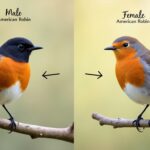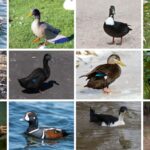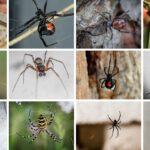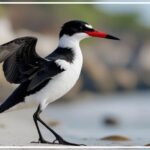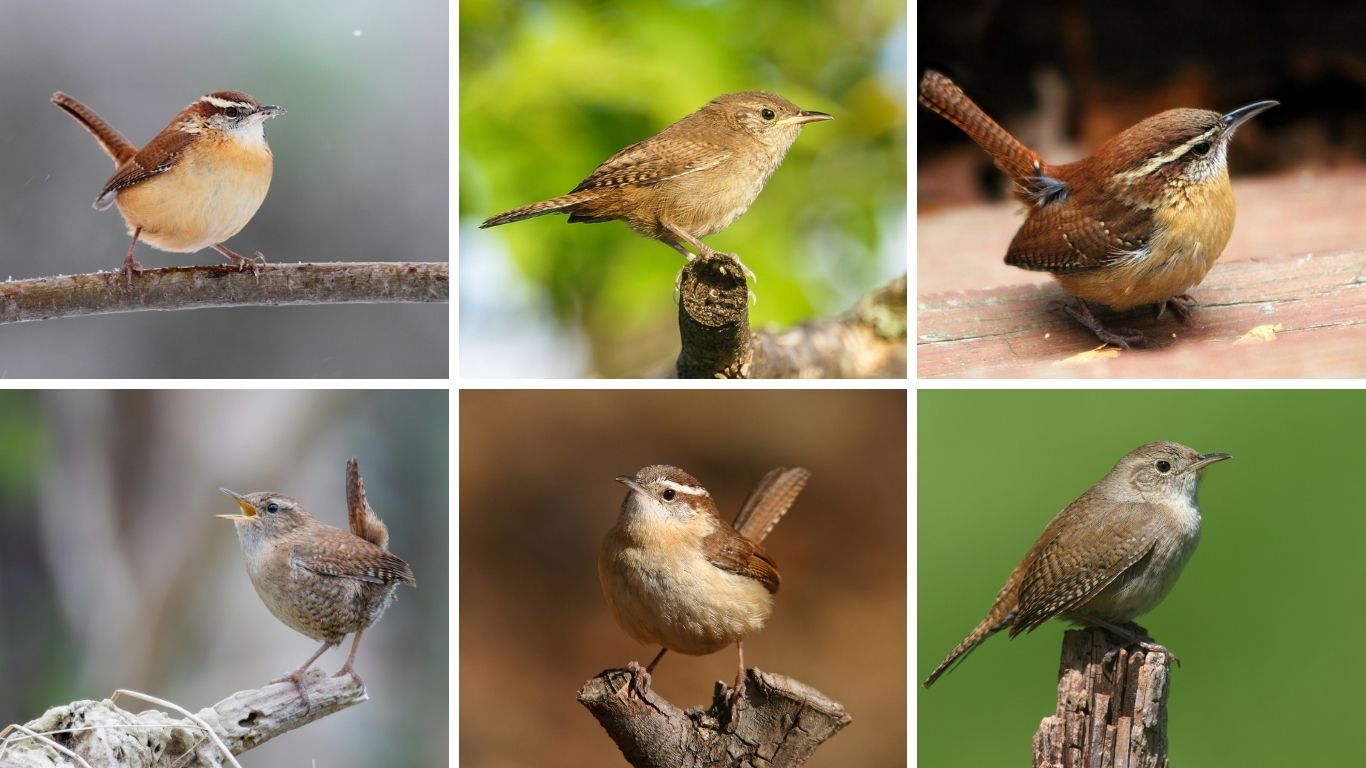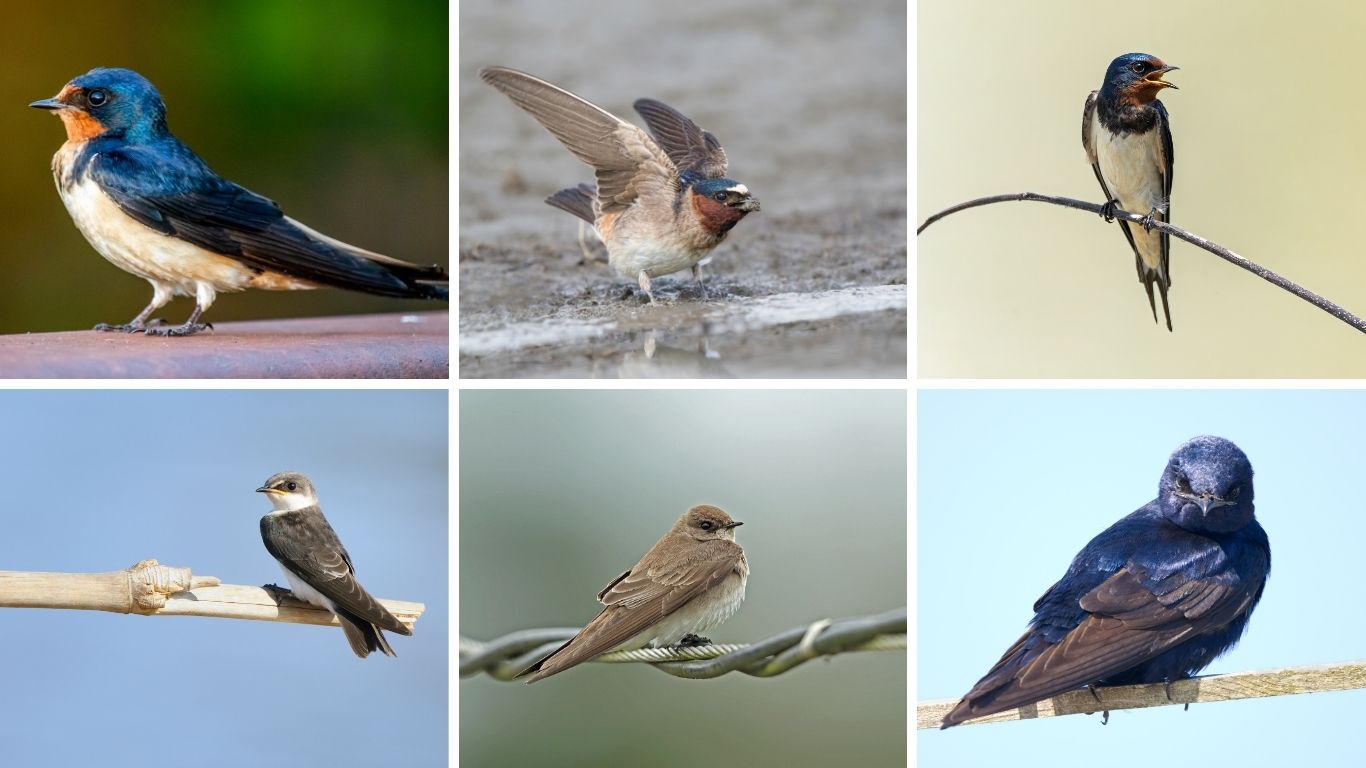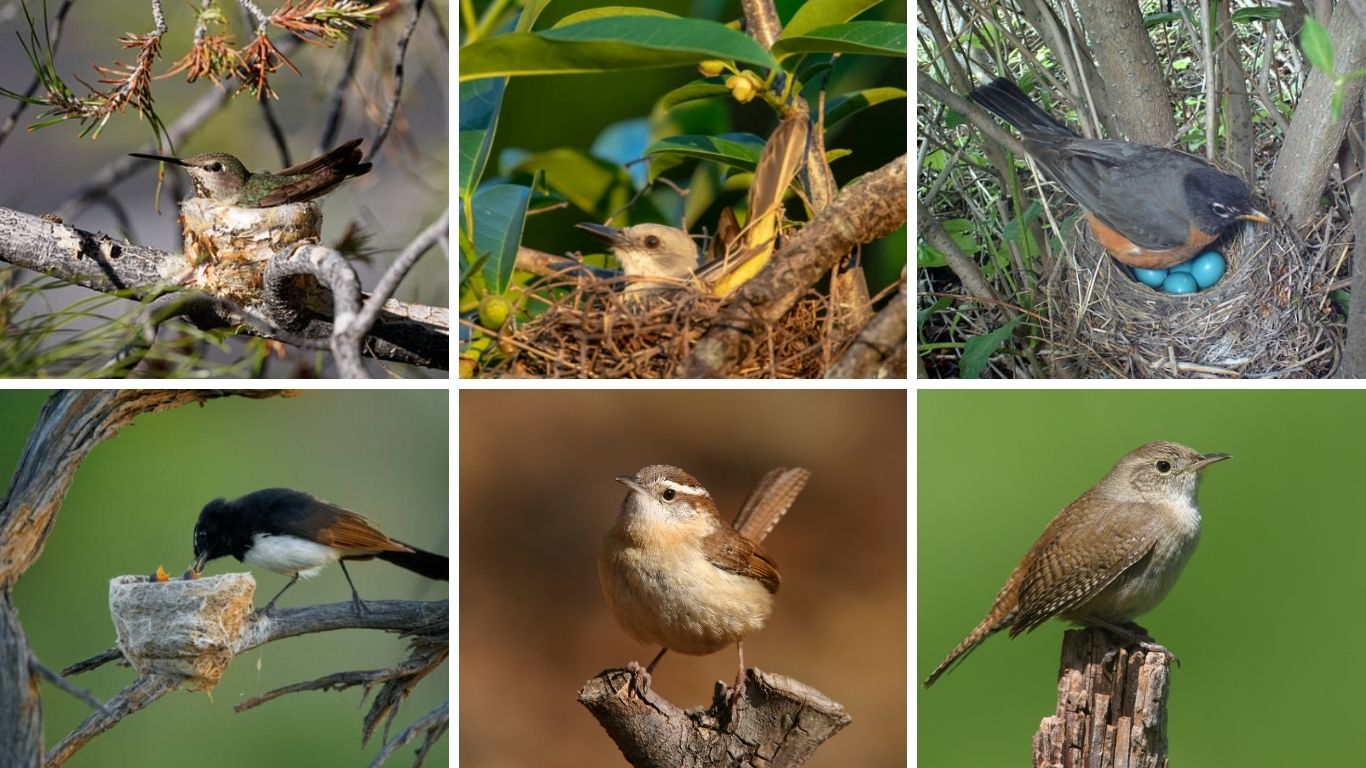House Wrens (Troglodytes aedon) are small, energetic songbirds found across North, Central, and South America, as well as various islands in the Caribbean. Due to their wide range, they have evolved into numerous subspecies, each with slight differences in plumage, song, and behavior depending on geography and climate. From forested mountains to tropical islands, these wrens have adapted impressively to diverse environments, making them one of the most widespread and variable songbird groups in the Americas.
1. Northern House Wren (Troglodytes aedon aedon)

Found widely across eastern and central North America, the Northern House Wren is a small, lively bird known for its cheerful song and bold nesting behavior. It easily adapts to suburban settings and loves nesting in man-made structures.
Identification
- Small body, about 4.3–5.1 inches long
- Brown upperparts with fine barring on wings and tail
- Pale grayish underparts
- Thin, slightly curved bill
- Tail often held upright
Habitat and Range
The Northern House Wren breeds across southern Canada and much of the United States east of the Rockies. It prefers woodlands, gardens, backyards, and edge habitats, often close to human activity.
Behavior and Nesting
These wrens are highly territorial and may remove other birds’ eggs from nearby nests. They construct dome-shaped nests using twigs, feathers, and leaves, usually in cavities or nest boxes. Males sing persistently to attract mates and defend their area.
2. Western House Wren (Troglodytes aedon parkmanii)

This subspecies dominates the western regions of North America. While similar to the Northern House Wren, it has slight vocal and plumage differences, and it thrives in drier, more open environments.
Identification
- Similar in size to Northern House Wren (4.3–5.1 inches)
- Slightly grayer or duller plumage
- Narrow dark barring on wings and tail
- Pale throat and belly
- Thin, curved bill
Habitat and Range
Western House Wrens are found across the western United States and parts of western Canada and Mexico. They favor dry woodlands, desert edges, and scrubby areas, often nesting near rocks or human-made structures.
Behavior and Nesting
These birds are energetic and aggressive, defending nesting cavities with vigor. Their nests are made in crevices, fence posts, or birdhouses. Males sing persistently, with a distinct regional song compared to eastern wrens.
3. Southern House Wren (Troglodytes aedon musculus)
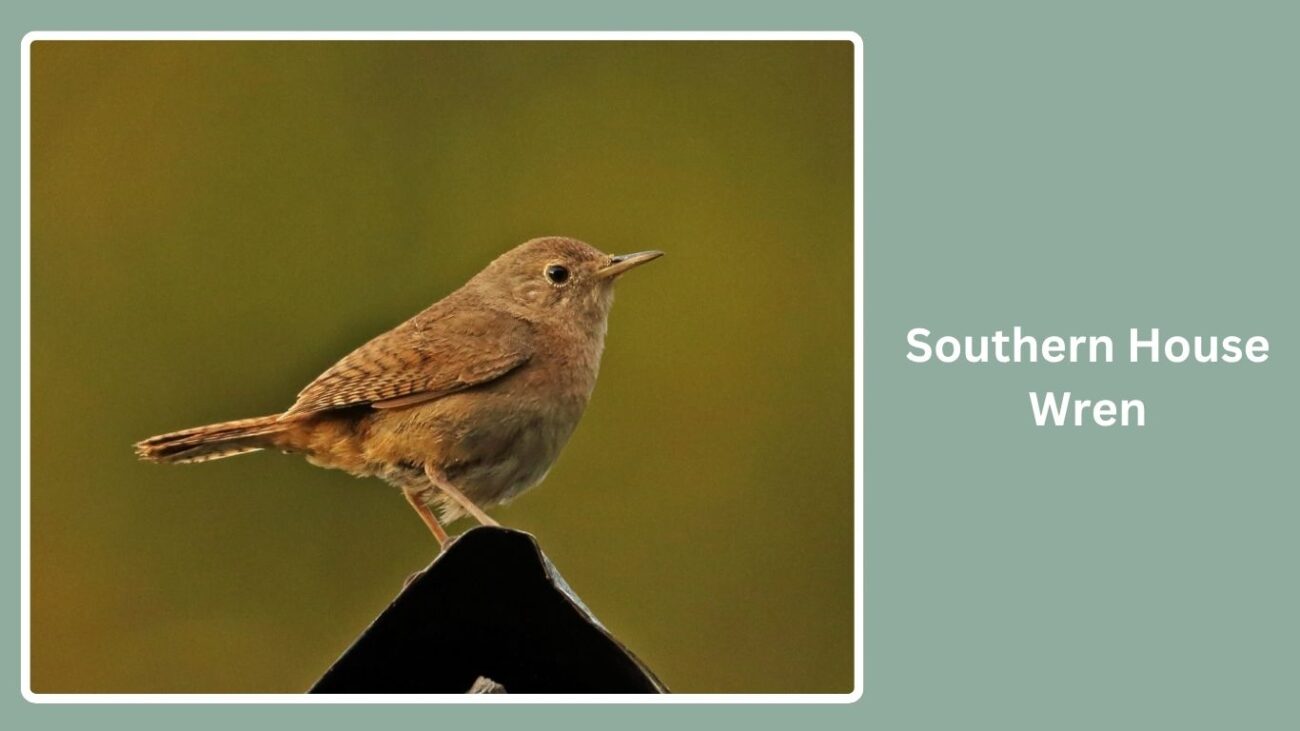
The Southern House Wren is common throughout Central and South America. It’s a year-round resident in tropical and subtropical areas and is slightly more uniform in color than northern forms.
Identification
- Medium brown all over, less contrast than northern subspecies
- Slight barring on wings and tail
- Plain pale throat and belly
- Small size, compact build
- Bill thin and slightly curved
Habitat and Range
This wren lives from southern Mexico to Argentina. It prefers gardens, plantations, forest edges, and towns, showing a strong adaptability to human environments.
Behavior and Nesting
Known for its loud, fast-paced song, the Southern House Wren builds nests in cavities, including walls, roofs, and tree hollows. Pairs are often monogamous, and both sexes may participate in nest defense.
4. Brown-throated House Wren (Troglodytes aedon brunneicollis)
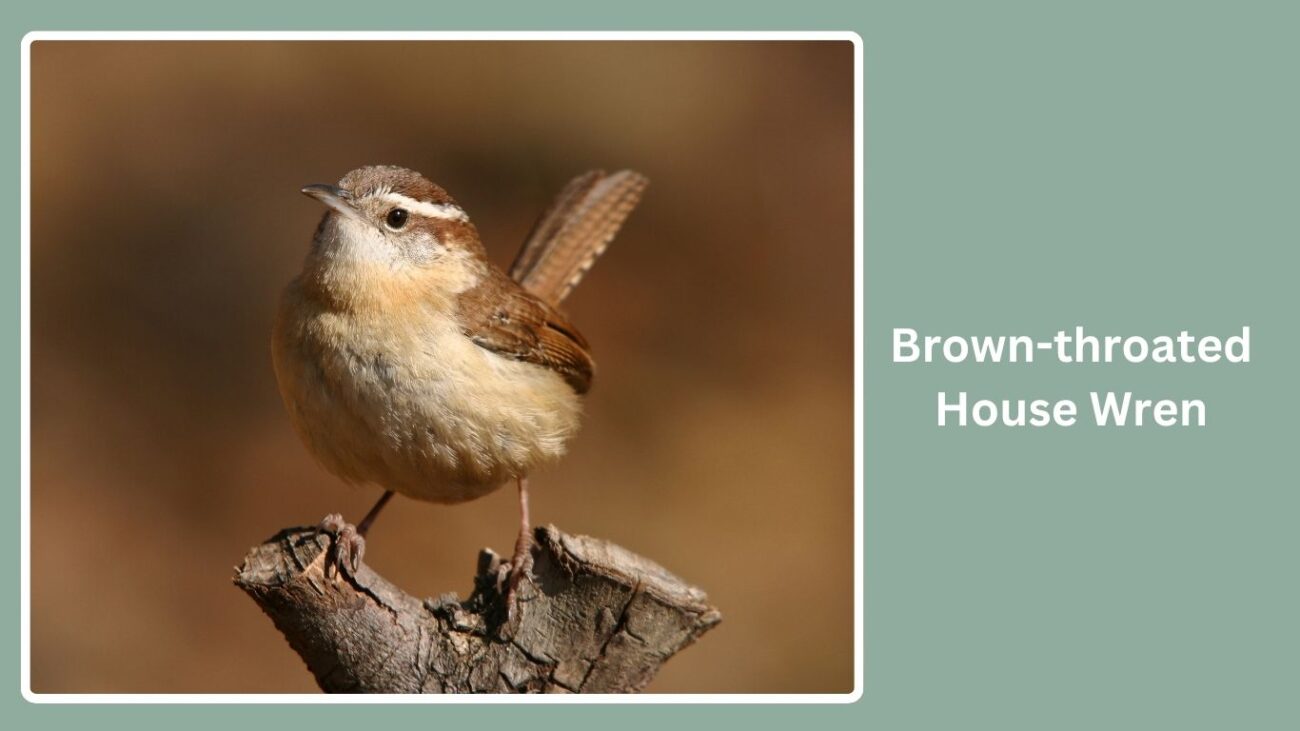
Native to Mexico and parts of the southwestern United States, the Brown-throated House Wren is distinguished by its darker throat and more richly colored plumage. It prefers higher elevations and forested areas.
Identification
- Rich brown upperparts with fine barring
- Dark brown throat, distinguishing it from paler-throated subspecies
- Buff or cinnamon underparts
- Thin, slightly decurved bill
- Short, rounded wings and tail
Habitat and Range
This subspecies occurs primarily in montane forests and oak woodlands in central and southern Mexico, occasionally ranging into Arizona and New Mexico.
Behavior and Nesting
Brown-throated House Wrens are secretive and more commonly heard than seen. Their nests are usually hidden in natural cavities, and their song is complex and musical. They adapt well to forest edge habitats.
5. Coiba Island House Wren (Troglodytes aedon coibae)
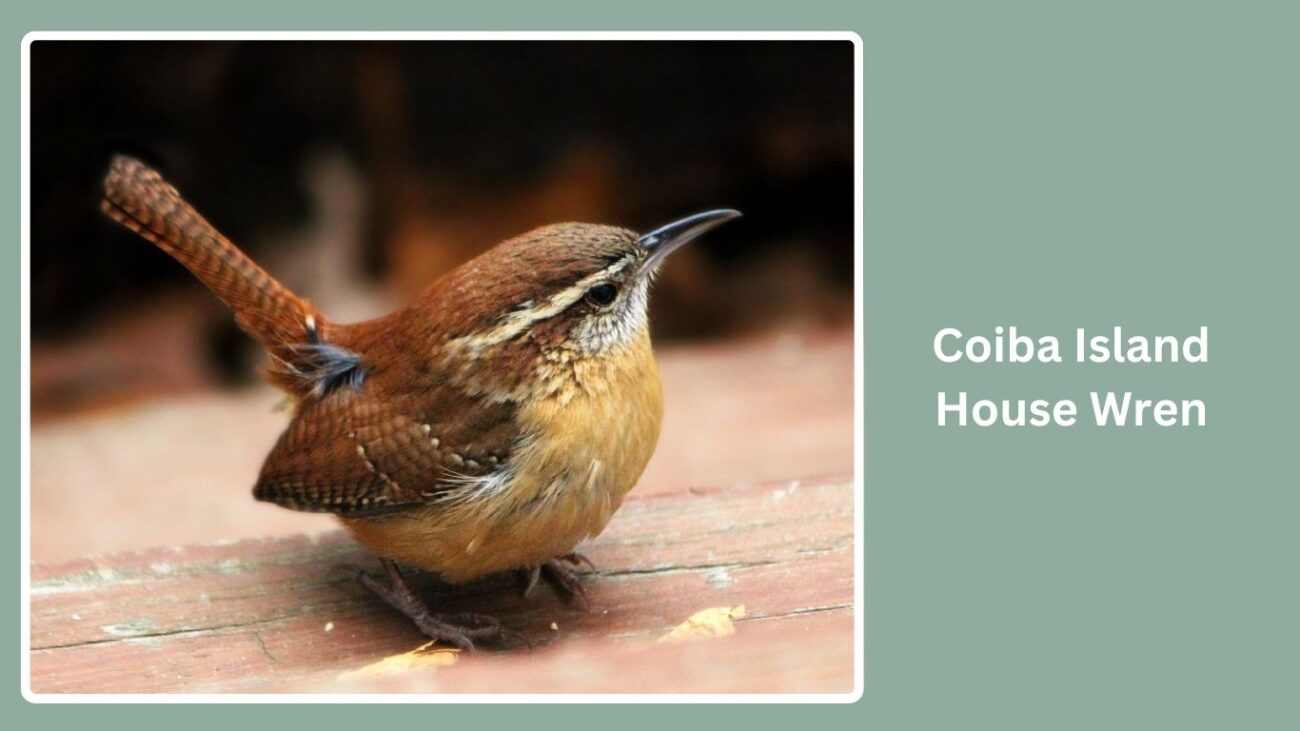
Endemic to Coiba Island off the Pacific coast of Panama, this insular subspecies is isolated and has developed unique characteristics due to its restricted environment.
Identification
- Overall brown plumage, slightly paler than mainland birds
- Light barring on tail and wings
- Pale throat and underparts
- Small, slender frame with thin bill
- Short tail, often held upright
Habitat and Range
Found only on Coiba Island, it inhabits coastal forests, secondary growth, and shrub areas. Its limited range makes it a conservation interest.
Behavior and Nesting
It exhibits typical wren behaviors—energetic, inquisitive, and vocal. This bird nests in tree holes, building with local vegetation, and defends its territory actively, like other House Wrens.
6. Tepui House Wren (Troglodytes aedon rufescens)
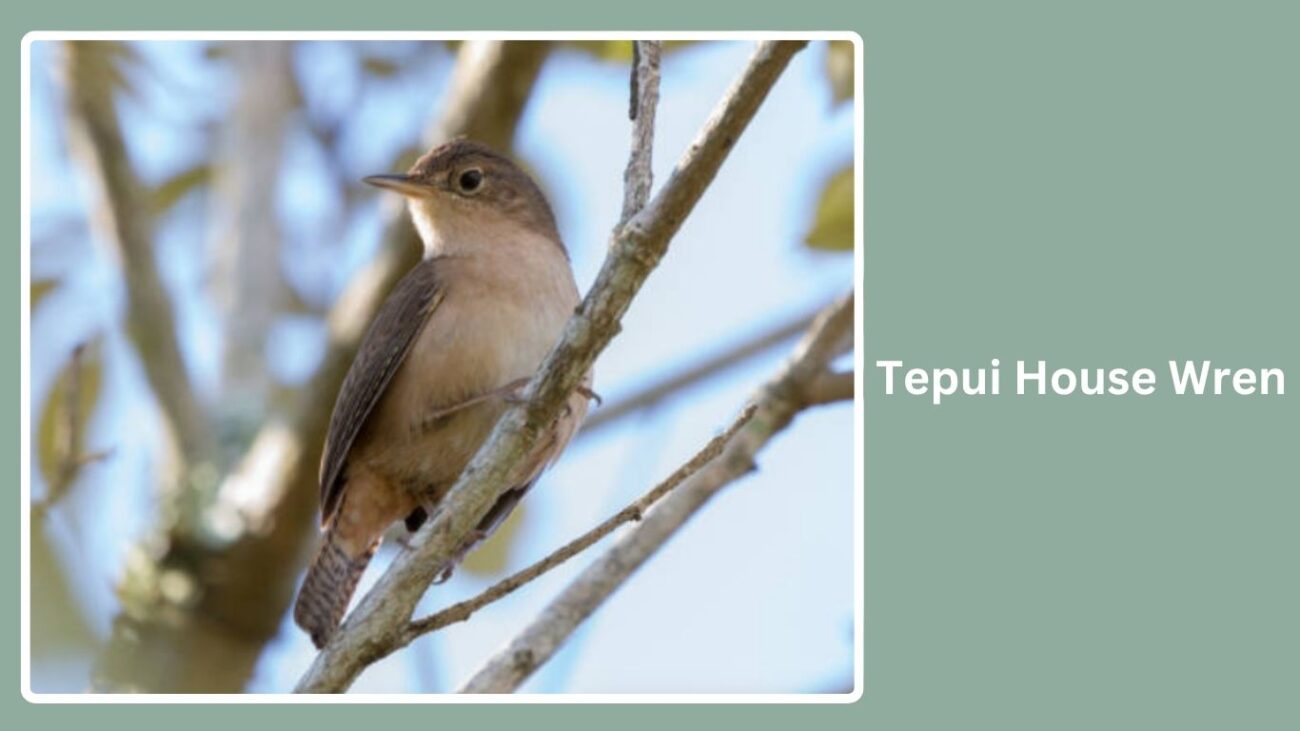
The Tepui House Wren is found in the highland regions of the Tepui mountains across Venezuela, Guyana, and northern Brazil. It is known for its rich coloration and adaptation to unique plateau habitats.
Identification
- Deep reddish-brown plumage on upperparts
- Warm buff underparts
- Faint barring on wings and tail
- Slender bill with slightly curved tip
- Compact body with an alert posture
Habitat and Range
Restricted to the Tepui highlands, this subspecies lives in montane forests, steep cliffs, and scrubby plateaus. Its isolated range contributes to its distinct appearance and calls.
Behavior and Nesting
These wrens are active and bold, often heard singing from exposed perches. They nest in crevices or cavities in trees and rocks, using twigs and soft materials. Their song is slightly different from lowland populations.
7. Grenada House Wren (Troglodytes aedon grenadensis)
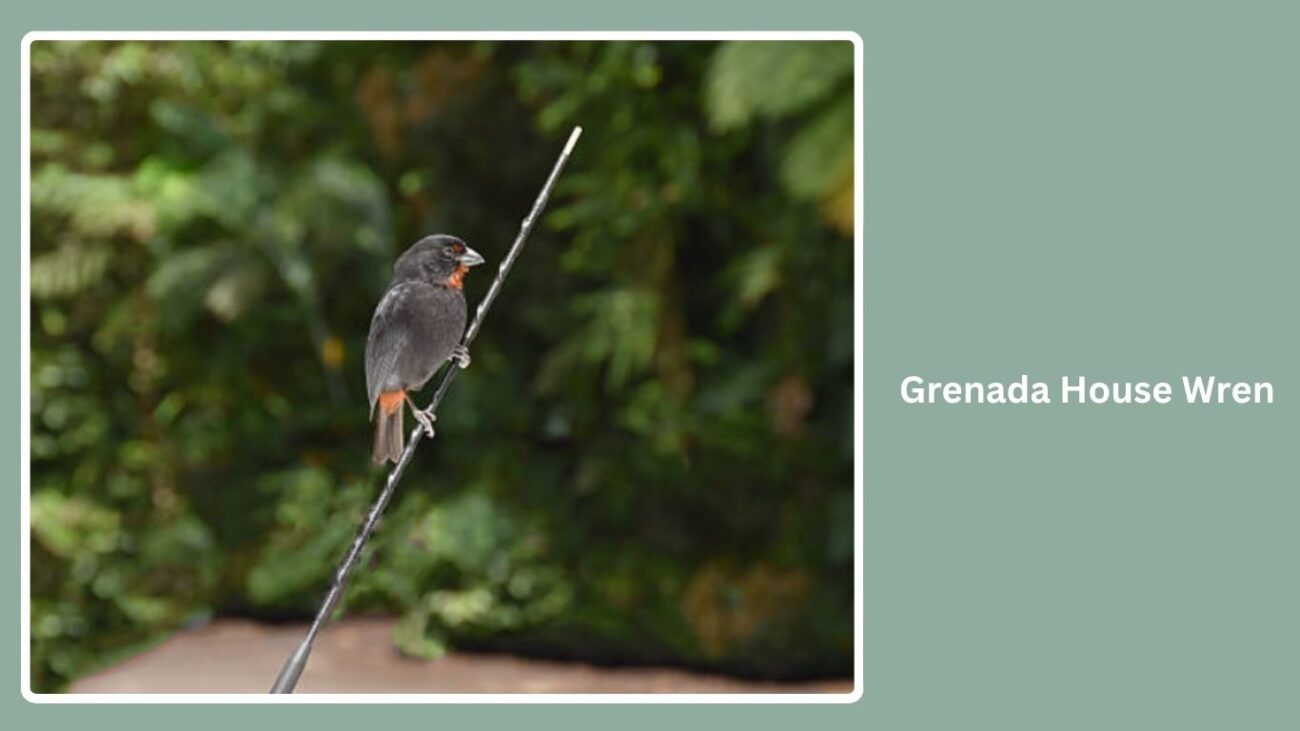
This island subspecies resides exclusively on Grenada in the Caribbean. It has evolved slight differences from its mainland relatives due to island isolation.
Identification
- Medium brown body with warm tones
- Paler throat and belly
- Slight barring on flanks, wings, and tail
- Slim, down-curved bill
- Tail held cocked in typical wren fashion
Habitat and Range
Found only on the island of Grenada, it lives in gardens, thickets, plantations, and near human dwellings. It adapts well to both wild and semi-urban areas.
Behavior and Nesting
Grenada House Wrens are curious and often seen hopping low in dense cover. They nest in cavities, wall holes, and even abandoned coconut husks. The males sing a varied and high-pitched tune.
8. St. Lucia House Wren (Troglodytes aedon mesoleucus)
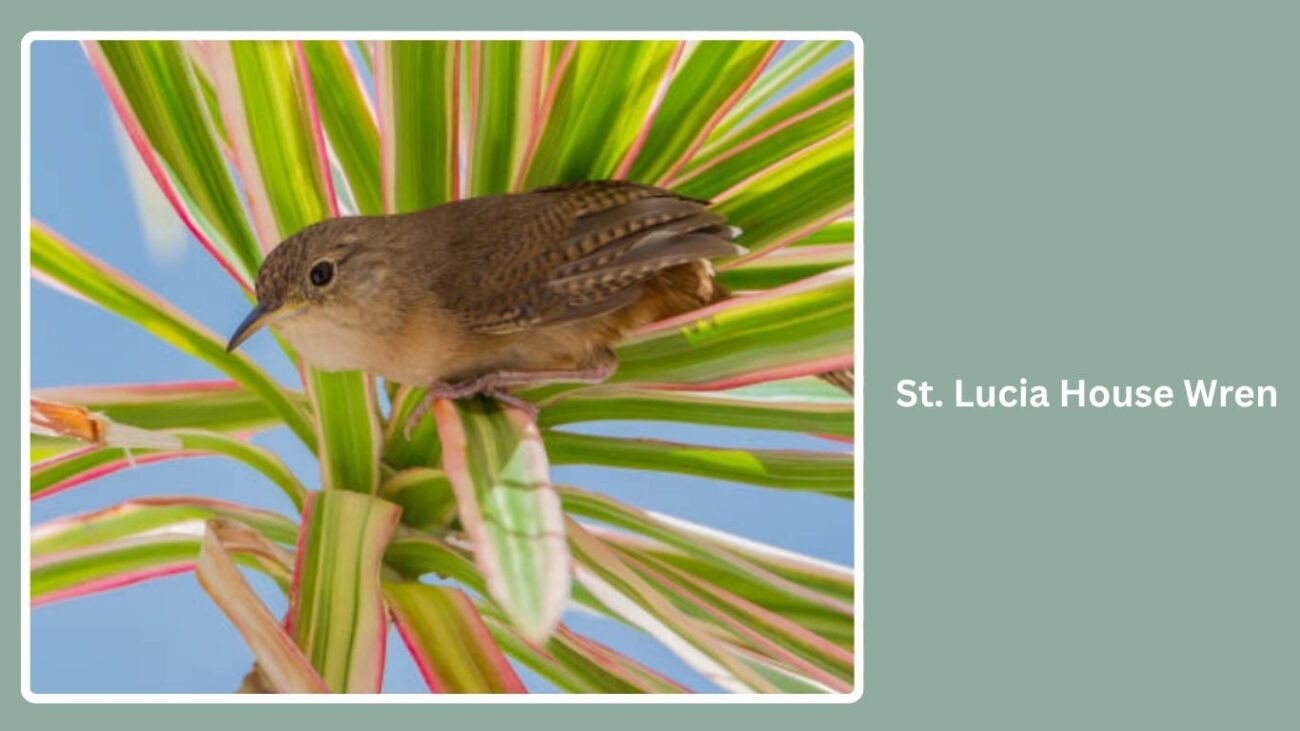
Endemic to the Caribbean island of St. Lucia, this subspecies has adapted to the island’s forested and coastal habitats. It is slightly paler than mainland wrens and known for its distinctive song.
Identification
- Light brown upperparts with faint barring
- Whitish or pale gray underparts
- Slight streaking on flanks
- Fine, curved bill
- Upright tail posture typical of wrens
Habitat and Range
Found only on St. Lucia, it inhabits dry forests, plantations, gardens, and thickets. Though restricted in range, it is locally common.
Behavior and Nesting
The St. Lucia House Wren is vocal and territorial, using sharp calls to defend its nesting area. It nests in tree holes, under roofs, or wall crevices, using dried grasses and leaves to build its home.
9. Clarión House Wren (Troglodytes aedon clarionensis)

This insular subspecies lives only on Clarión Island, part of the Revillagigedo Islands off western Mexico. Due to its geographic isolation, it exhibits subtle physical and vocal differences from other subspecies.
Identification
- Grayish-brown upperparts
- Buffy underparts with minimal streaking
- Subtle barring on wings and tail
- Slightly longer bill compared to other wrens
- Short, rounded wings and tail held upright
Habitat and Range
Native to Clarión Island, it resides in shrublands, rocky outcrops, and areas near human buildings. Its limited range makes it vulnerable to habitat disruption.
Behavior and Nesting
This wren is shy and elusive but quite vocal. It builds nests in rock crevices or within structures and forages low to the ground for insects. Its song is softer and more limited in variety than mainland wrens.
10. Isla de Providencia House Wren (Troglodytes aedon providenciae)

This subspecies is restricted to Isla de Providencia, a small Colombian island in the Caribbean Sea. It has adapted well to island life, with slight physical distinctions from mainland forms.
Identification
- Medium brown upperparts
- Pale underparts with a buff tint
- Faint barring on wings and tail
- Slender, curved bill
- Small, rounded body with upright tail
Habitat and Range
Endemic to Isla de Providencia, it inhabits gardens, shrublands, and lightly forested areas. Though isolated, it thrives in both natural and human-modified environments.
Behavior and Nesting
These wrens are active and vocal, often perching low in bushes. Nests are built in cavities, walls, or dense vegetation, using twigs and soft plant fibers. Their song is varied but less complex than that of some mainland wrens.
11. Socorro Wren (Troglodytes sissonii)
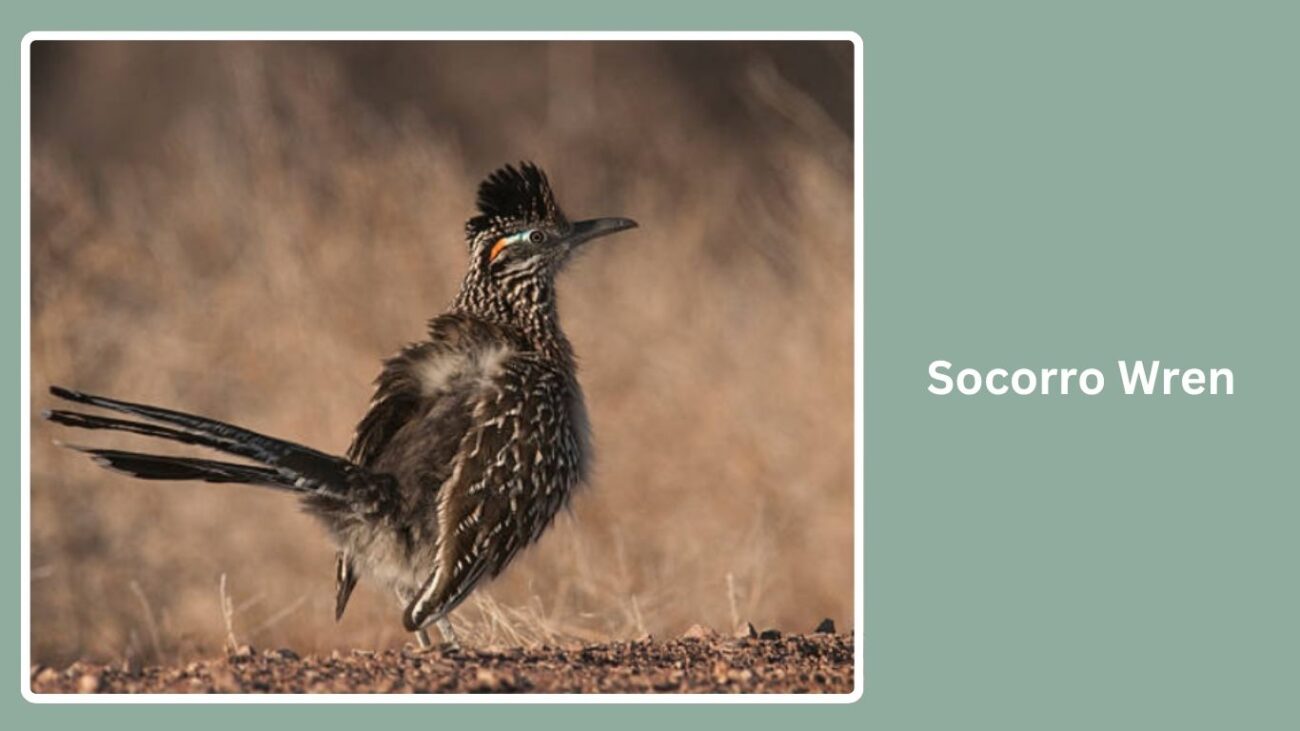
Although now often considered a separate species, the Socorro Wren was previously treated as a subspecies of the House Wren. It is native to Socorro Island in the eastern Pacific Ocean.
Identification
- Rich reddish-brown upperparts
- Warm buff underparts
- Heavily barred wings and tail
- Short, fine bill with slight curve
- Compact body with rounded features
Habitat and Range
Found only on Socorro Island, this bird inhabits dry forest, shrubland, and volcanic terrain. It is one of the few land birds on the island and has a stable, though limited, population.
Behavior and Nesting
Socorro Wrens are energetic and adaptable. They nest in rock crevices, holes, or low vegetation, and feed primarily on insects. Their call is strong and repetitive, used to mark territory and attract mates.
12. Cozumel Wren (Troglodytes beani)

Once considered a subspecies of the House Wren, the Cozumel Wren is now often treated as a distinct species. It is endemic to Cozumel Island off the Yucatán Peninsula in Mexico.
Identification
- Pale brown upperparts
- Whitish or gray underparts
- Fine barring on tail and wings
- Slender, downcurved bill
- Upright tail, typical wren posture
Habitat and Range
Restricted to Cozumel Island, it lives in scrublands, gardens, and lightly wooded areas. Though isolated, it has adapted well to human-altered habitats.
Behavior and Nesting
Cozumel Wrens are bold and curious, often seen exploring low shrubs and rocks. They nest in holes, walls, or cavities using local plant matter. Their song is bright and repeated frequently.
13. Guadeloupe House Wren (Troglodytes aedon guadeloupensis)
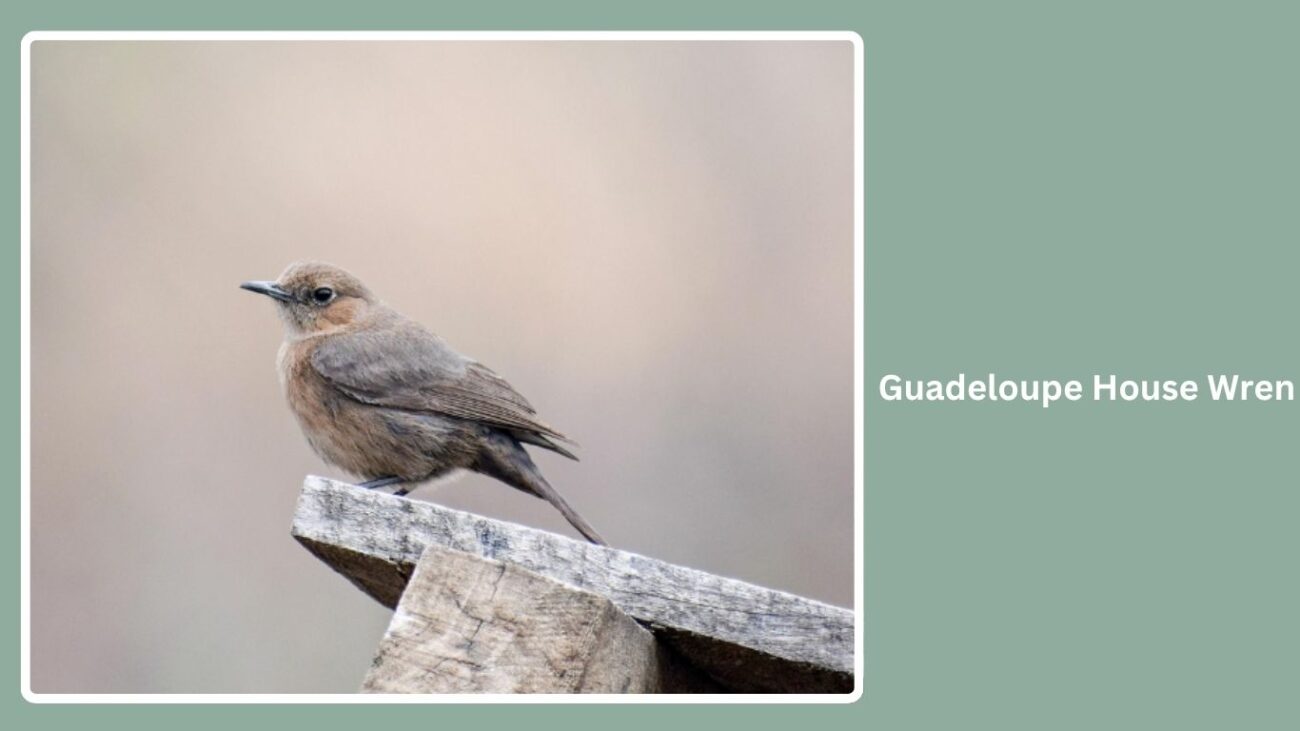
Native to the island of Guadeloupe in the Lesser Antilles, this subspecies has declined significantly and may be extinct or critically endangered due to habitat loss and introduced predators.
Identification
- Medium brown overall coloration
- Pale, slightly buffy underparts
- Light barring on tail
- Thin bill, slightly curved
- Small body with typical wren structure
Habitat and Range
Previously found throughout Guadeloupe in gardens, coastal scrub, and dry forests. Today, sightings are rare or non-existent.
Behavior and Nesting
Very little is currently known due to its rarity. Historically, it nested in cavities and behaved similarly to other island wrens, feeding on insects and singing sharp, repetitive calls.
14. Martinique House Wren (Troglodytes aedon martinicensis)
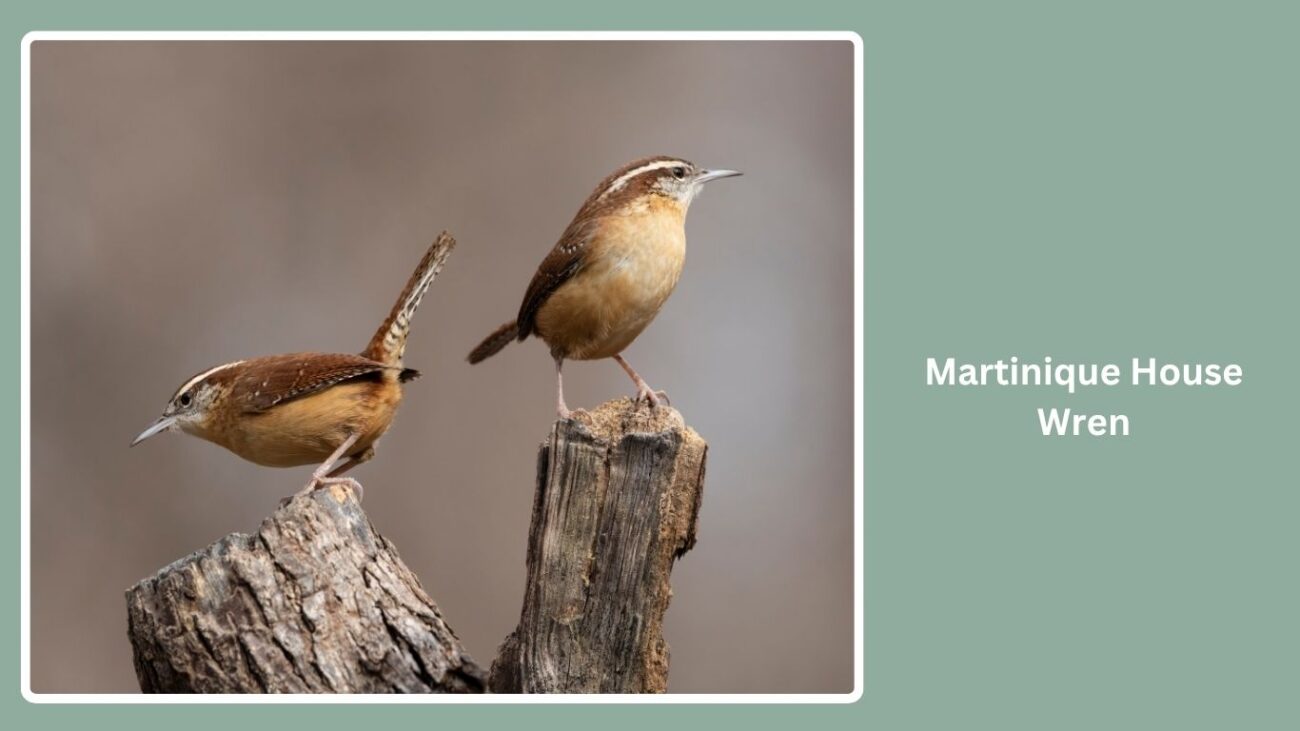
Endemic to the island of Martinique in the Lesser Antilles, this subspecies has adapted to a variety of habitats on the island. Its isolation has led to subtle differences from other Caribbean wrens.
Identification
- Warm brown upperparts
- Buff to whitish underparts
- Fine barring on tail and wings
- Slender, slightly decurved bill
- Upright tail posture
Habitat and Range
Found only on Martinique, it inhabits gardens, plantations, forests, and urban edges. It is relatively common in suitable habitats across the island.
Behavior and Nesting
Martinique House Wrens are bold and noisy. They frequently explore low shrubs and man-made structures. Nests are placed in cavities and filled with twigs and soft lining, while their song is varied and musical.
15. St. Barts House Wren (Troglodytes aedon columbae)
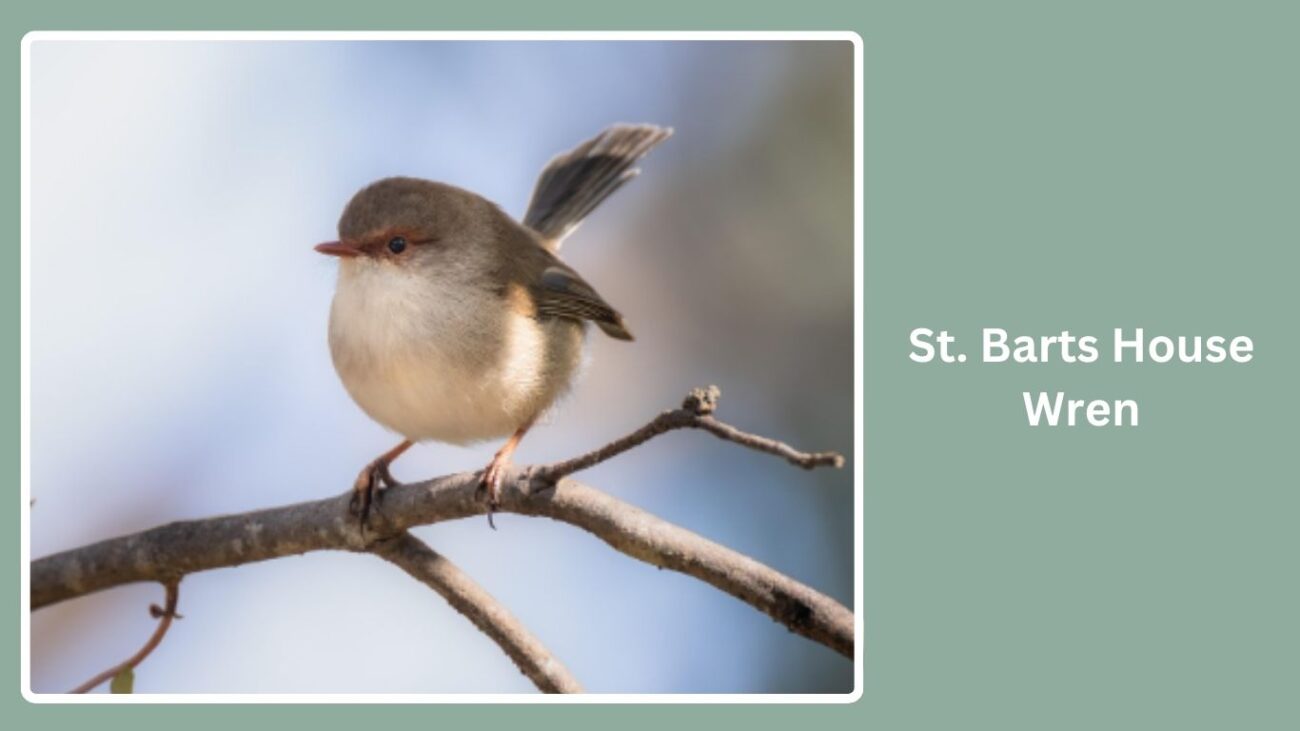
The St. Barts House Wren is a little-known and possibly extinct subspecies once found on the small Caribbean island of Saint Barthélemy. It has not been reliably seen in decades.
Identification
- Pale brown plumage
- Lighter underparts with a gray or buff hue
- Minimal barring compared to other wrens
- Small, thin bill
- Upright tail often flicked
Habitat and Range
Historically found in shrublands, dry forest, and gardens on St. Barts. Urbanization and habitat degradation may have contributed to its decline.
Behavior and Nesting
Very little is recorded about this subspecies. Like other wrens, it likely nested in crevices and used a variety of plant material. Its song was believed to be high-pitched and repetitive.
16. Bahamas House Wren (Troglodytes aedon baldwini)
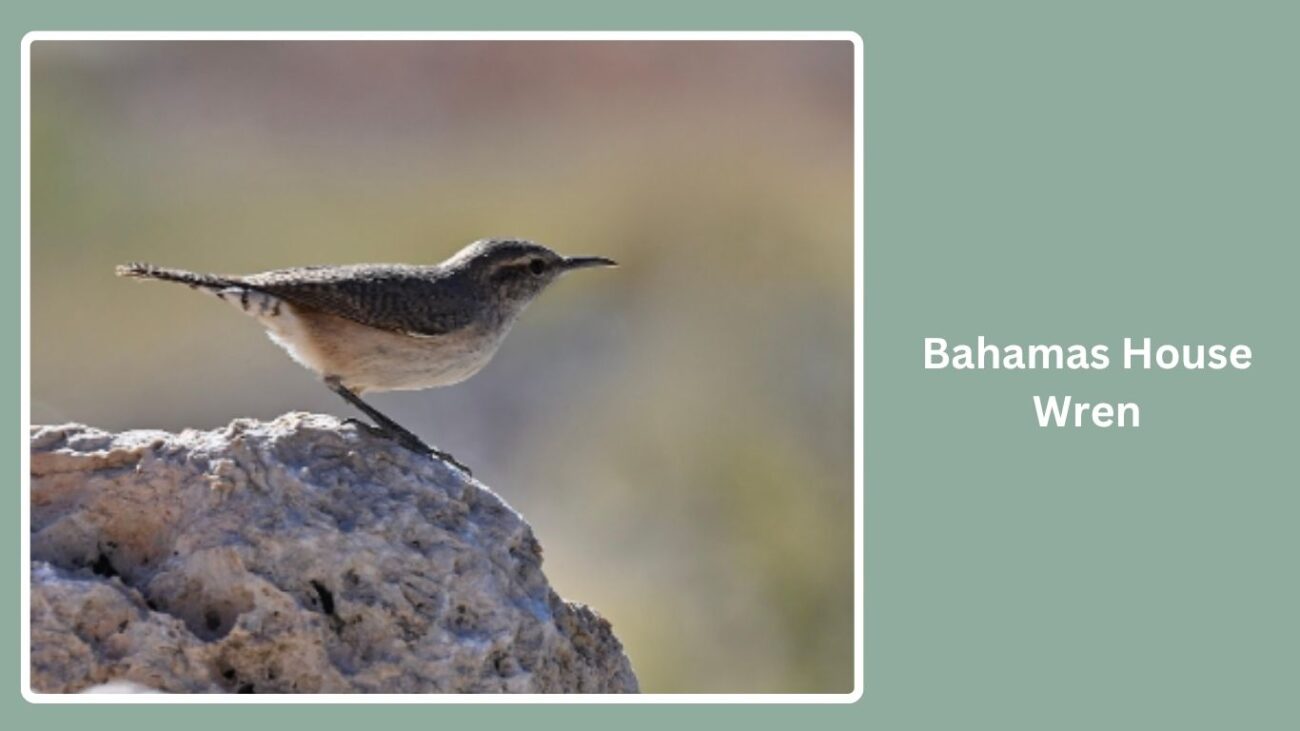
This subspecies is native to several islands in the Bahamas. Isolated from mainland populations, it shows slight differences in size and color, adapted to coastal and island habitats.
Identification
- Pale brown upperparts
- Grayish or buff underparts
- Subtle barring on wings and tail
- Small, slender bill
- Upright tail, often flicked frequently
Habitat and Range
Occurs on various islands in the Bahamas, including New Providence and Andros. It prefers scrubby woodlands, coastal thickets, and areas near human dwellings.
Behavior and Nesting
These wrens are active and vocal, often found foraging in low shrubs. Nests are built in natural crevices or artificial structures using twigs and soft materials. Their song is short and sharp.
17. Grand Cayman House Wren (Troglodytes aedon caymanensis)
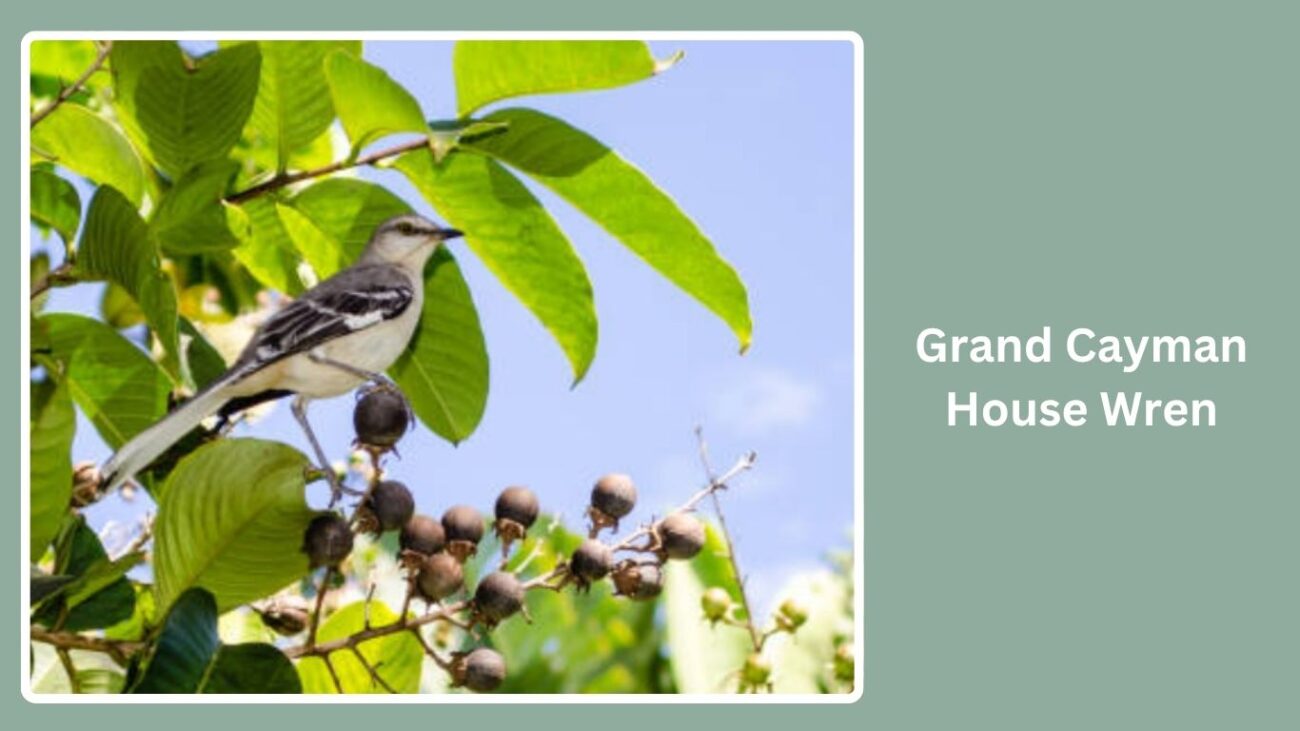
Endemic to Grand Cayman in the Caribbean, this island subspecies is similar in behavior to other island wrens but adapted to the unique flora and microclimate of the island.
Identification
- Warm brown body coloration
- Pale gray or whitish underparts
- Faint barring on wings and tail
- Fine, curved bill
- Rounded wings and short tail
Habitat and Range
Found only on Grand Cayman, it inhabits forest edges, gardens, and areas close to settlements. Though limited in distribution, it remains fairly common on the island.
Behavior and Nesting
The Grand Cayman House Wren is bold and territorial. It nests in tree holes, wall crevices, or under roofs. The male sings to defend its territory, and both sexes may help build the nest.
18. Bonaire House Wren (Troglodytes aedon bonairensis)
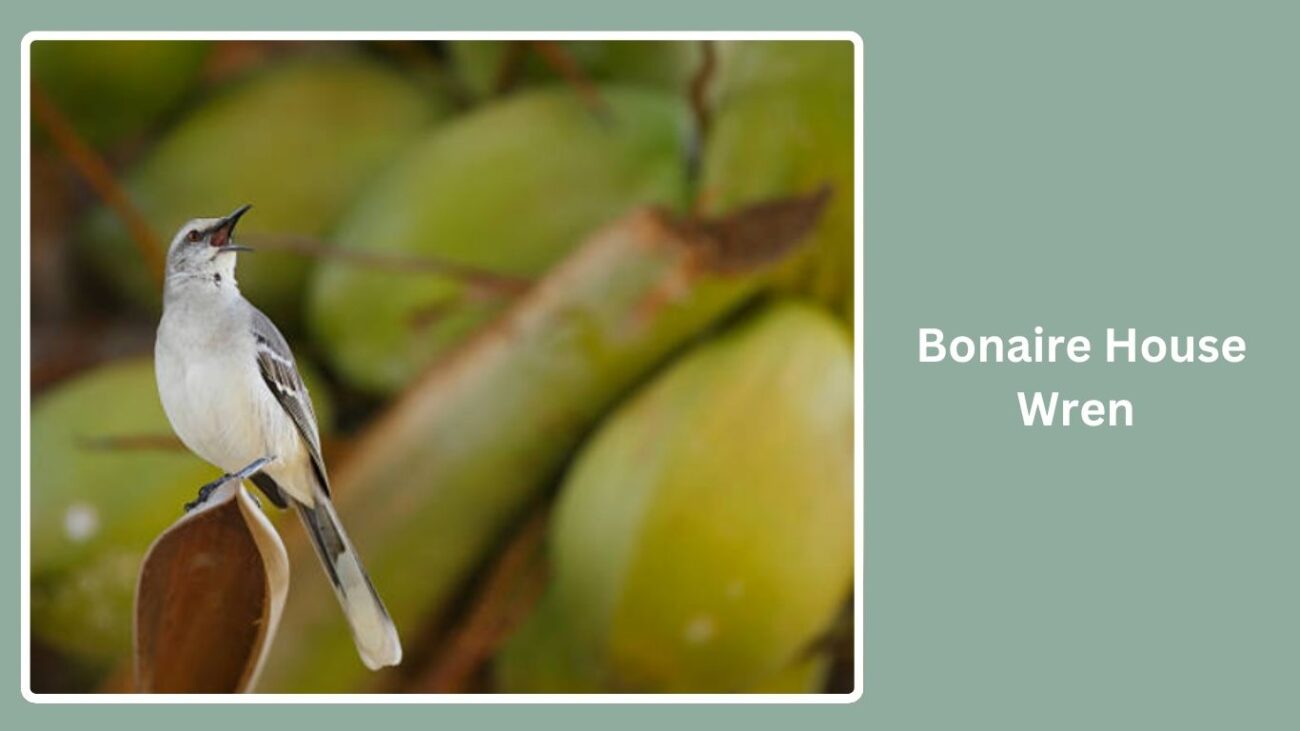
This subspecies is restricted to the Caribbean island of Bonaire, located off the northern coast of Venezuela. Its small population and isolated habitat have led to unique local traits.
Identification
- Light brown upperparts with soft barring
- Buffy underparts with slight shading
- Subtle barring on wings and tail
- Thin, downcurved bill
- Tail often held upright
Habitat and Range
Found only on Bonaire, it prefers dry scrublands, thorny thickets, and semi-urban gardens. Its restricted range makes it vulnerable to habitat changes.
Behavior and Nesting
This wren is shy but vocal, often staying hidden in dense foliage. Nests are placed in tree hollows, wall gaps, or rock crevices. It feeds on insects and has a high-pitched, repetitive song.
19. Isla Margarita House Wren (Troglodytes aedon audax)

Endemic to Isla Margarita off the northeastern coast of Venezuela, this subspecies is part of the southern group of House Wrens and displays adaptations to coastal island life.
Identification
- Medium brown upperparts
- Grayish or buff-toned underparts
- Light barring on tail and wings
- Narrow, curved bill
- Compact size and upright tail
Habitat and Range
Found only on Isla Margarita, it inhabits dry forests, coastal scrub, and village gardens. It is relatively uncommon and somewhat elusive.
Behavior and Nesting
These wrens are alert and active, using dense shrubs and trees for foraging. They nest in natural cavities, using dry plant matter, and vocalize with short, sharp notes typical of island wrens.
20. Colombia Lowlands House Wren (Troglodytes aedon leucurus)

This subspecies is found in the lowland regions of Colombia and is part of the southern group of House Wrens. It thrives in tropical environments and displays some regional plumage variation.
Identification
- Brown upperparts with lighter barring
- Pale underparts, often whitish or buff
- Slight streaking on flanks
- Fine, slightly curved bill
- Short tail held upright
Habitat and Range
Occurs in Colombia’s tropical lowlands, especially in open woodlands, agricultural fields, and suburban areas. It adapts well to disturbed habitats.
Behavior and Nesting
Active and inquisitive, this wren often forages low in shrubs or on the ground. It nests in wall crevices, hollow logs, or even household objects. Its song is bright and variable, helping distinguish local populations.
21. Central America House Wren (Troglodytes aedon intermedius)
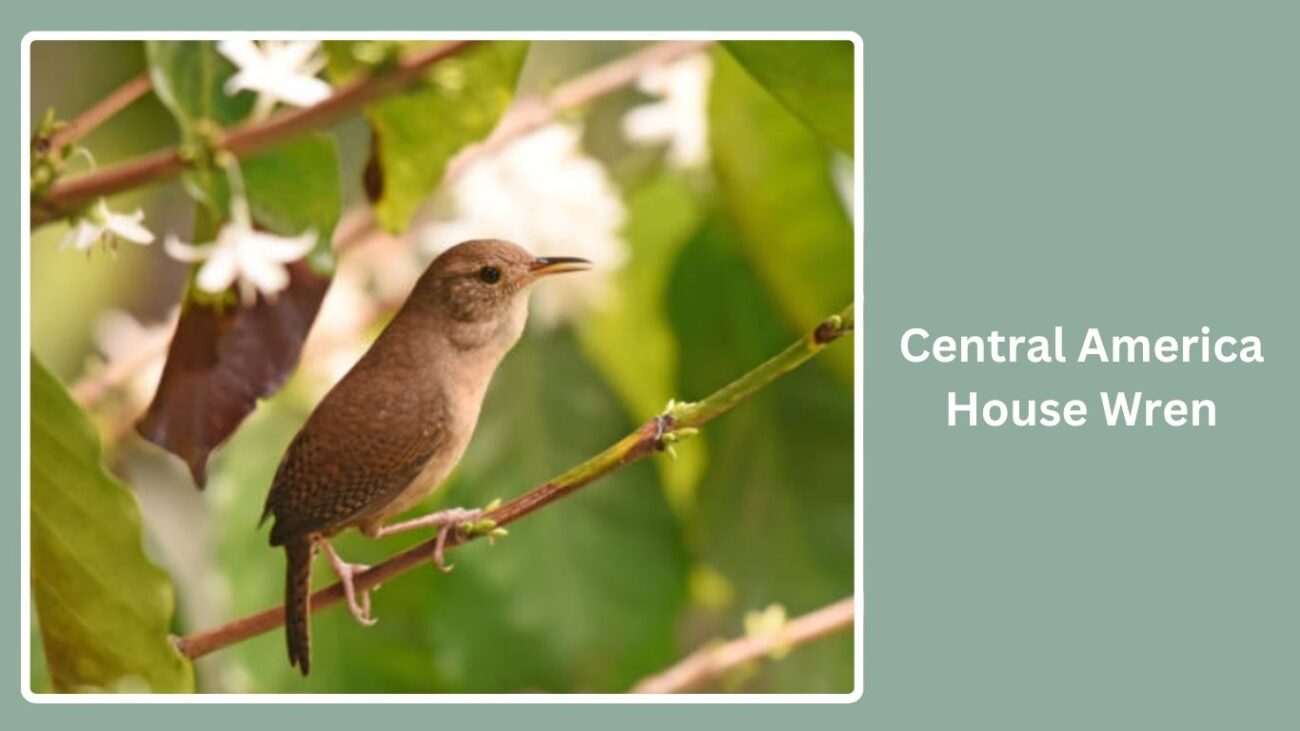
Widely distributed throughout Central America, this subspecies bridges the northern and southern forms, showing intermediate traits in both appearance and vocalizations.
Identification
- Warm brown back and wings
- Pale grayish or buff underparts
- Subtle barring on tail and flanks
- Slender, decurved bill
- Tail often cocked and flicked
Habitat and Range
Found from southern Mexico through Panama, it occupies gardens, coffee plantations, forest edges, and towns. It is one of the most visible and vocal wrens in the region.
Behavior and Nesting
Extremely adaptable, this wren nests in a wide range of cavities—from tree holes to eaves and fence posts. Males are persistent singers, and pairs may reuse the same nesting sites over multiple seasons.
22. Argentina–Uruguay House Wren (Troglodytes aedon rufulus)
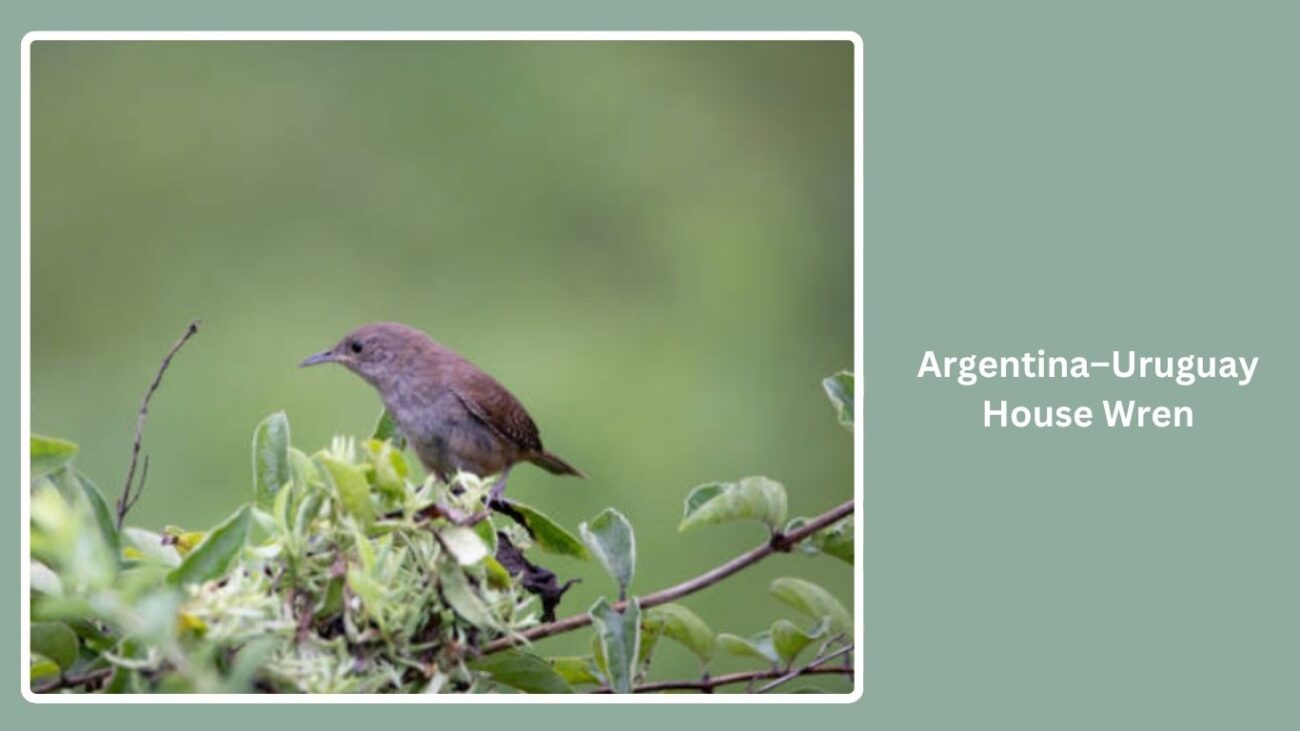
This subspecies is found throughout Argentina, Uruguay, and parts of southern Brazil. It is one of the southernmost representatives of the House Wren complex and adapts well to temperate environments.
Identification
- Brown upperparts with faint barring
- Light gray to buff underparts
- Slight barring on tail and flanks
- Slender, curved bill
- Tail typically held upright and flicked
Habitat and Range
Common in rural areas, gardens, woodlots, and towns across Argentina and Uruguay. It favors open spaces with scattered vegetation and man-made structures.
Behavior and Nesting
This wren is bold and often sings from exposed perches. It nests in tree cavities, walls, or nest boxes using twigs and feathers. The male’s song is loud, with a rapid, warbling tone.
23. South Brazil House Wren (Troglodytes aedon turdinus)

Inhabiting the southeastern region of Brazil, this subspecies is part of the southern population group. It prefers humid forests and more wooded environments compared to others.
Identification
- Darker brown upperparts
- Grayish-white underparts
- Heavier barring on tail and wings
- Thin, slightly curved bill
- Small, round body with upright tail
Habitat and Range
Occurs in forests, forest edges, and suburban areas in southeastern Brazil. Less associated with dry or open areas than other subspecies.
Behavior and Nesting
Often shy, staying within cover. It builds nests in sheltered spots like tree hollows or man-made structures. Its vocalizations are complex and varied, often echoing through forested areas.
24. Trinidad and Tobago House Wren (Troglodytes aedon tobagensis)

This subspecies is found primarily on the island of Tobago and is rarely seen on Trinidad. It has evolved subtle features suited to the island’s humid, tropical environment.
Identification
- Brownish upperparts with faint barring
- Pale underparts, often tinged with buff
- Slight barring on wings and tail
- Fine, slightly downcurved bill
- Compact body with tail typically held upright
Habitat and Range
Found mostly in Tobago, it inhabits gardens, plantations, forest edges, and coastal thickets. Though somewhat localized, it is commonly observed.
Behavior and Nesting
These wrens are very vocal and often forage in low shrubs. Their nests are built in cavities and crevices, lined with soft materials. They are known for their quick, repetitive call patterns.
25. Ecuadorian House Wren (Troglodytes aedon hypolixus)
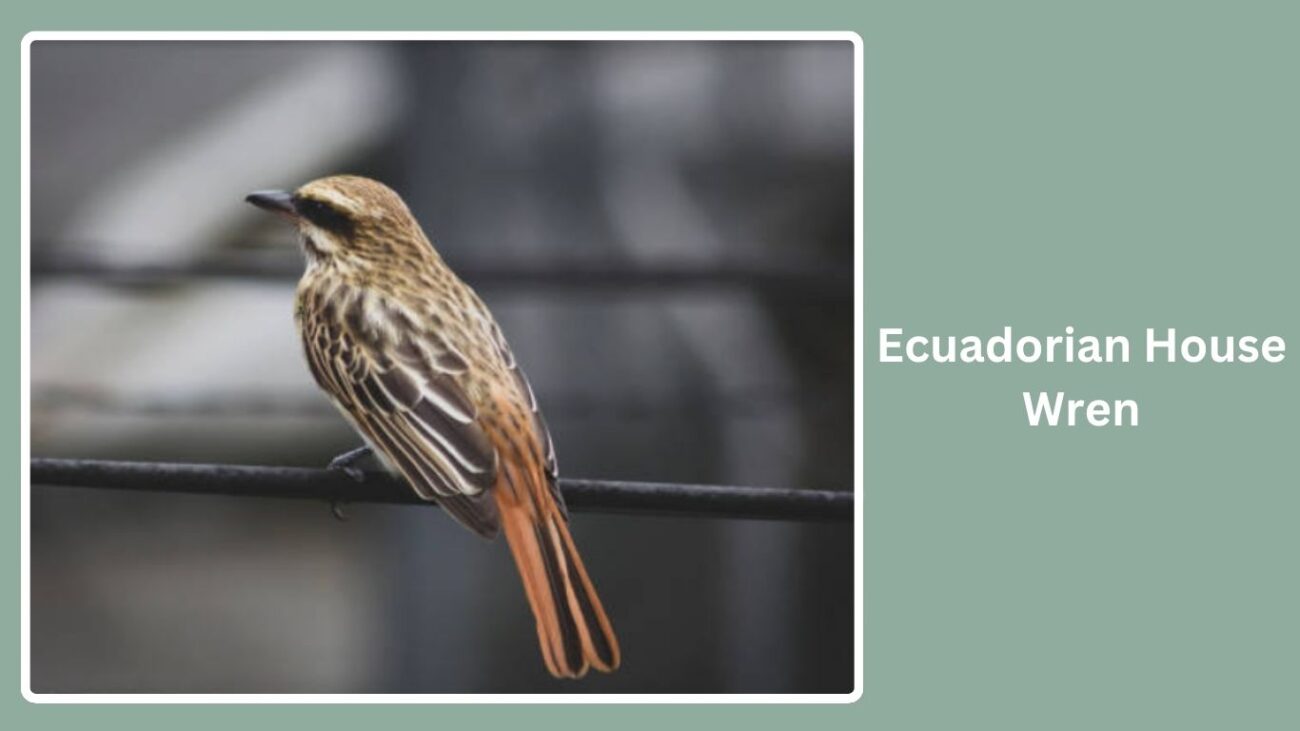
This subspecies is distributed throughout lowland and montane regions of Ecuador. It represents part of the Andean population and is well-adapted to varied elevations.
Identification
- Medium brown upperparts
- Pale gray or whitish underparts
- Narrow barring on flanks and tail
- Thin, curved bill
- Upright tail posture typical of wrens
Habitat and Range
Found across a range of habitats in Ecuador, including Andean valleys, forest borders, gardens, and cultivated lands. It is present from lowlands to elevations over 2,000 meters.
Behavior and Nesting
Highly active and bold, this wren often sings from exposed perches. Nests are usually located in holes, walls, and roofs, often close to human activity. Its song is rich and variable.
26. Venezuelan Andes House Wren (Troglodytes aedon inquietus)

This subspecies is native to the mountainous regions of western Venezuela. Adapted to cooler, high-altitude environments, it shows distinct vocal and physical traits from lowland populations.
Identification
- Dusky brown upperparts
- Light grayish underparts
- Narrow barring on wings and tail
- Fine, slightly decurved bill
- Tail usually held upright
Habitat and Range
Found primarily in the Venezuelan Andes, it inhabits montane forests, forest edges, and human-altered landscapes like gardens and farmlands at higher elevations.
Behavior and Nesting
This wren is an energetic singer, often heard more than seen. It nests in natural cavities or building crevices, using twigs and fibers. Its song is rapid and loud, suited for mountainous acoustic conditions.
27. Panama House Wren (Troglodytes aedon niveicinctus)
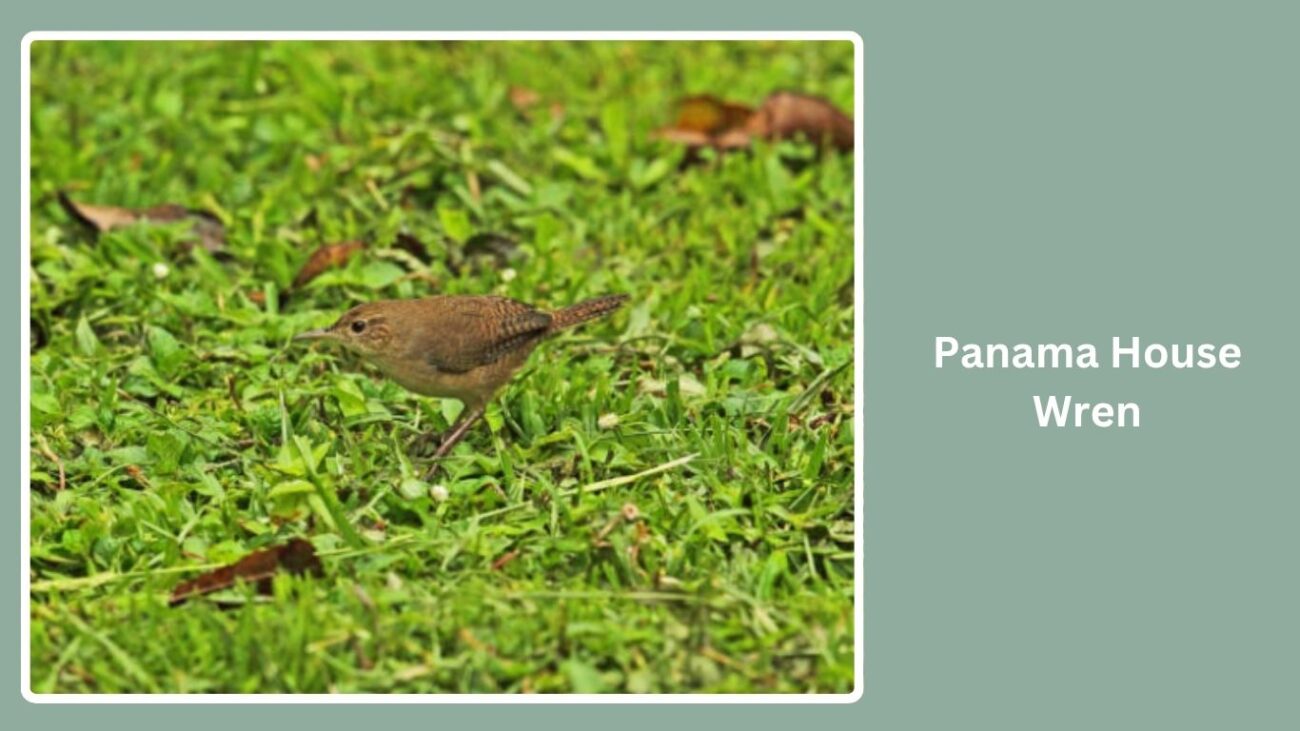
Native to Panama, this subspecies marks the transition between Central and South American forms. It shows intermediate characteristics in color, behavior, and song.
Identification
- Medium brown back and wings
- Pale grayish underparts
- Slight barring on flanks and tail
- Slim, curved bill
- Compact size with typical upright tail
Habitat and Range
Occurs throughout much of Panama in varied habitats: tropical forests, plantations, gardens, and rural settlements. It’s one of the more commonly seen wrens in the region.
Behavior and Nesting
Panama House Wrens are vocal, curious, and adaptable. They often build nests in fences, eaves, or abandoned cavities. Their song is melodic and repeated frequently, often varying between individuals.
28. Central Andes House Wren (Troglodytes aedon striatulus)
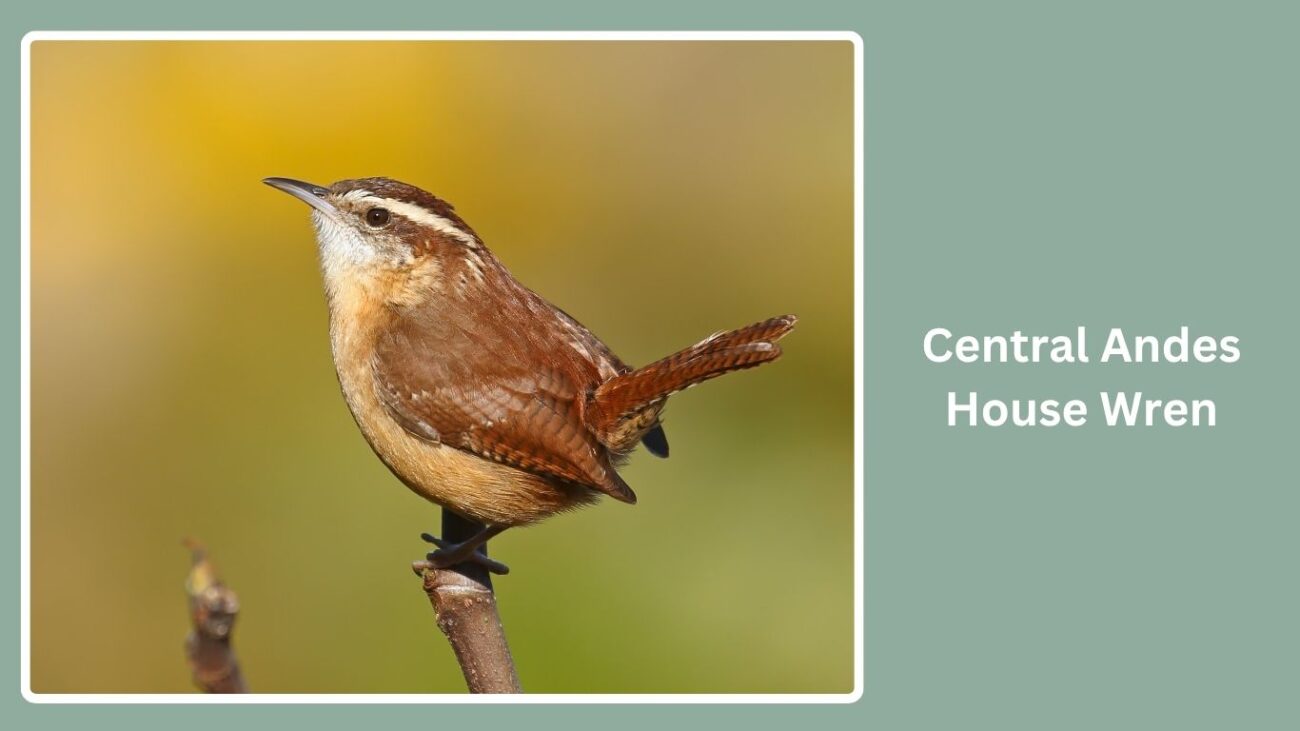
This subspecies inhabits the central Andes of Colombia, thriving in highland environments and showing adaptations to cooler temperatures and mountainous terrain.
Identification
- Dark brown upperparts
- Pale grayish underparts with slight streaking
- Stronger barring on wings and tail compared to lowland types
- Fine, slightly curved bill
- Tail often held cocked in classic wren posture
Habitat and Range
Found in the central Andes of Colombia, typically between 1,500–3,000 meters in elevation. It lives in montane forests, coffee plantations, and village areas.
Behavior and Nesting
Central Andes House Wrens are bold and loud. They nest in natural or artificial cavities, often reusing familiar locations. Their song is rich and slightly slower-paced, suited for echoing in high elevations.
Summary:
The House Wren species includes nearly 30 recognized subspecies and regional forms, ranging from the familiar Northern and Western House Wrens of North America to island-dwelling wrens like those on Cozumel, Bonaire, and Clarión Island. While their appearances are similar, each type reflects unique adaptations to its habitat—whether it’s a dense rainforest, dry island scrub, or Andean highland. These differences highlight the remarkable adaptability of House Wrens and their ability to thrive in both natural and human-altered environments.

